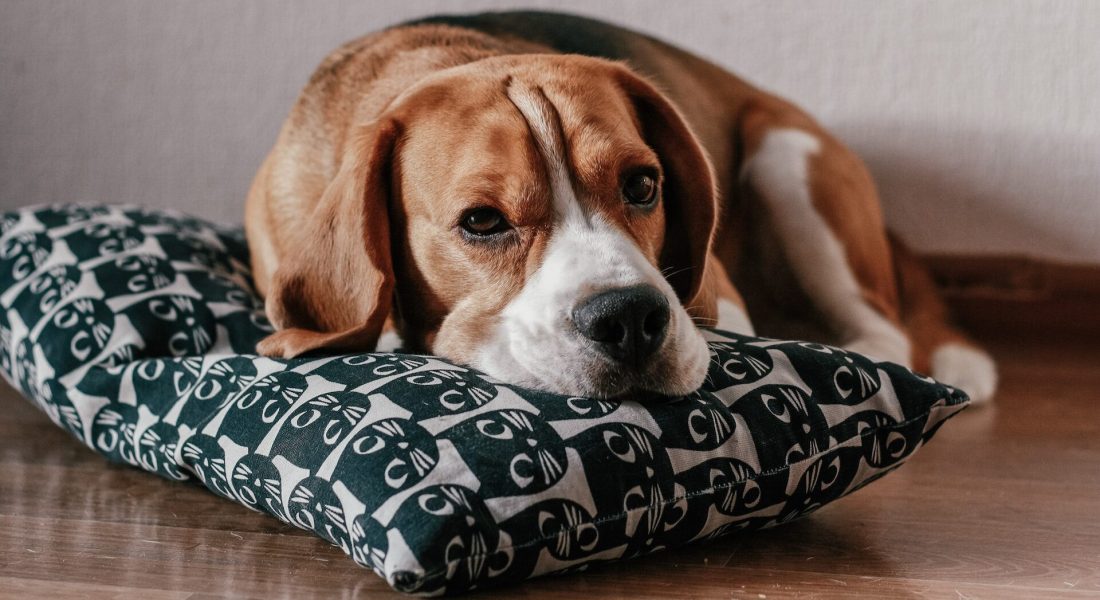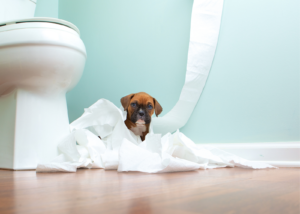Separation anxiety can be a challenging issue for dog owners to handle. It’s not uncommon for our furry friends to become anxious and distressed when left alone, which can lead to destructive behaviors and excessive barking.
In this guide, we’ll explore the causes of separation anxiety in dogs and provide tips on preventing it. A knowledgeable and loving owner is all our puppies need in order to provide the best life possible!
How do I know if my dog’s problem is due to separation anxiety?
Let’s first discuss some of the typical signs of separation anxiety in our furry friends.
These include excessive barking, whining, pacing, and destructive behavior such as chewing furniture or scratching doors. If these behaviors are happening when you leave your pup alone then separation anxiety may be the problem!
However, it’s essential to rule out any other possible causes for these behaviors before assuming it’s due to separation anxiety. For example, if your dog is not getting enough exercise or mental stimulation before they are left alone, they may exhibit similar behaviors out of boredom rather than out of anxiety.
If you suspect your dog is suffering from separation anxiety you can always consult a professional dog trainer or behaviorist who can help diagnose and develop a personalized plan for your pup. They will also be able to determine if any underlying medical conditions contribute to their anxiety.

Handling Separation Anxiety In Dogs
- Create a safe space: Provide your dog with a designated area where they can feel secure and comfortable. This can be a crate or a specific room that they associate with positive experiences, such as treats or toys.
- Practice desensitization: Start by leaving your pup alone for a short period of time, gradually increasing the length. You can first leave the room, then leave the house for a few minutes, then a few hours.
- Leave them with enriching activities: Provide your dog with interactive toys or puzzles to keep them mentally stimulated while you’re away. This will help prevent boredom and destructive behavior.
- Consider alternative options: If your dog’s separation anxiety is severe, consider enlisting the help of a trusted friend or family member to check in on them during the day or hiring a dog sitter.
- Avoid punishment: Punishing your dog for exhibiting separation anxiety will only make their fear and distress worse. Instead, reward them for calm behavior.
- Be patient: Overcoming separation anxiety takes time and patience, so don’t get discouraged if your dog doesn’t improve immediately. With consistent training and positive reinforcement, you can help your dog feel more comfortable when left alone.
- Take care of yourself: As a dog owner, it’s easy to feel guilty or anxious when your dog struggles with separation anxiety. Seek support from loved ones and find ways to alleviate any stress or guilt you may be feeling.
With these tips in mind, you can help with separation anxiety in dogs and foster a happier, healthier relationship with your furry friend.
Are there other reasons that my dog may engage in these behaviors?
Aside from separation anxiety, there are many other causes for destructive behavior and excessive barking in dogs. These include boredom, lack of exercise or attention, fear or trauma, and medical issues. It’s essential to rule out these possibilities before assuming it is solely due to separation anxiety.
If needed, consult with a professional, and never punish your dog for exhibiting these behaviors. Working together, you can find the best solution for you and your beloved companion.
How To Prevent Separation Anxiety
There are a few steps you can take to prevent separation anxiety in your dog from developing in the first place. These include crate training, creating a safe and comforting environment, and establishing a consistent routine.
As mentioned earlier, gradually introduce your dog to being alone for short periods while rewarding calm behavior. This will help them build confidence and overcome any potential anxiety.
Leaving Your Dog To “Cry It Out”
The last thing you want to do is leave your dog alone for extended periods and expect them to “cry it out”. This can exacerbate their separation anxiety, leading to destructive behaviors and distress.
Remember that dogs are social animals and thrive on companionship, so creating a balanced routine that includes alone time and quality bonding time with your pet is essential. With patience and understanding, you can help your dog feel more comfortable when left alone.
Conclusion
Separation anxiety is a common issue in dogs that can cause distress for both the pet and their owner. However,by following this guide you can overcome this challenge and foster a stronger bond with your furry friend.
Remember to be patient, care for yourself, and seek professional help. You can create a happier and healthier life for you and your beloved companion.
With these tools and tips, you can help your dog feel more secure, confident, and content when left alone.




